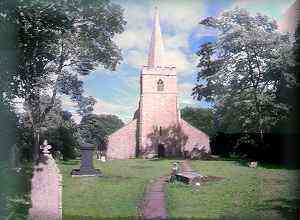Huthwaite Burial Grounds
Huthwaite cemetery grounds are run by the District Council. The old rituals of burial do however still hold a strong religious link by extending christian concerns in comforting both the dying and saddened mourners.
Evidentially unearthed around the world are graves showing earliest known humans offered respect to their deceased. Hidden from scavenging animals, bodies became buried in ritual laid alongside possessions. Across Britain larger earthen burial mounds were exposed dating into the Bronze Age. Commonly called Barrows, early settlements named around those monuments may reflect referencing. Pioneering Sutton-in-Ashfield historians suggested our adjacently addressed domed heights of Whiteborough could have been shaped with naming derived from such ancient purpose. Although dismissed to-date, that unproven theory remains simply echoed among other related local folklores, helpfully promoting newer villager interests.
Graves dug through pagan Britain favoured a north to south layout. Following the spread of Christianity our familiar east to west alignment became adopted, quite accurately measured in accordance too the laying of all early church foundations. Graveyards were often sited inside oldest parish church grounds. Nearest plots achieving higher regard, especially after centuries of use which inevitably brought overcrowding.
 The original graveyard extended around St Mary Magdalene retains aging headstones. Weathered inscriptions could potentially record times when that ancient Sutton parish encompassed our growing secondary Hucknall-under-Huthwaite township. It was an industrial 19th century that saw combined parishioner numbers rapidly rising, calling for independent services and then far larger burial grounds.
The original graveyard extended around St Mary Magdalene retains aging headstones. Weathered inscriptions could potentially record times when that ancient Sutton parish encompassed our growing secondary Hucknall-under-Huthwaite township. It was an industrial 19th century that saw combined parishioner numbers rapidly rising, calling for independent services and then far larger burial grounds.
Not everyone of influential wealth truly aspired to being assured a prominent resting place amongst parish grounds. Years before the councils separately opened a Huthwaite and Sutton cemetery are nonconformist families granted their own private burial plots.
Private Quaker Graves
A descriptive 1864 directory revealed this extract In 1834, Mr. Jeremiah Burrows by will directed that a portion of the land contained in his orchard should be set apart as a burial ground for him and his family for ever. The following year Mr. Burrows died, and was interred according to his request. Other members have been interred in the same place since. The land has been fenced round and neatly laid out by the present owner
. Concisely dated by William Rhodes' handwritten journal are 1835 Jan 26 - died Jeremiah Burrows of Hucknall and Buried in Orchard : 1859 May 23 - Buried Miss Burrows in Orchard, Hucknall
Questioning why they requested a private burial ground, it transpires the Burrows family were Quakers. Not that Sutton Parish clergy appear refusing any paid burials, but archaic persecutions, plus intolerance to Christian beliefs led many Quakers to otherwise seek a peaceful rest amongst Mansfield graveyards. Exact plot and numbers interred in Huthwaite are lost. The fact that Ben Woolley senior uprooted some old grave stones below his Beeches home fed strong beliefs they'd been buried directly behind The Peacock Hotel. His son however, innocently recalls worn headstones for laying shed foundations only marked pet graves, .
Jeremiah senior was indeed listed 1832 as one of the first Peacock victuallers. This fuelled belief the burial plot lay in a small rear garden, even though it would be unusual siting a graveyard in such close proximity to living family. His will actually describes it be set apart in his orchards, and that was when original grounds extended much further away from the roadside. Most of the land, including the orchard, was eventually sold off. A grand residence set in large gardens actually took name The Orchards, built by J.T. Boot. Reference is found in the 1869 Morris and Co. directory, to confirm my suspicions that Mr Boot purchased the land that still contained the private family burial ground of Mr J Burrows. The property was next taken over by Mr C.H. Coupe. Even this local J.P. had difficulty stopping boys from breaking the orchard fencing. And so in time, the disused plot must have simply been forgotten, to be further engulfed by far newer properties that claim modern addressing on the historically recognised areas of both Boots Yard, plus The Orchards.
Wesleyan Chapel Graves
It's purely coincidence to find the property once set in large grounds initially addressed The Orchards was built for an influential Boot family, who also established a family burial ground in aforenamed Hucknall Huthwaite. But these devoted Methodists led by Eleazor Boot, date our first Wesleyan Chapel in year 1815.
The old chapel yard was located on north west corner of a future Market Place. In the small garden fronting the chapel, the body of Eleazor was interred 1861, to lay alongside where he'd lovingly laid his wife Rose. This religious family graveyard remained until 1890, until Wesleyan followers opened up their larger Sutton Road church. Upon selling off their old chapel yard, the couples remains were respectfully reinterred in the nearby Blackwell Churchyard. That made way for progressive developments. Eldest residence may still recall the original Hutton store that replaced the corner. Adapted over the years to suit other businesses, it was fully refurbished in 2000 to ever since present the latest Huthwaite Co-Operative Food store.

